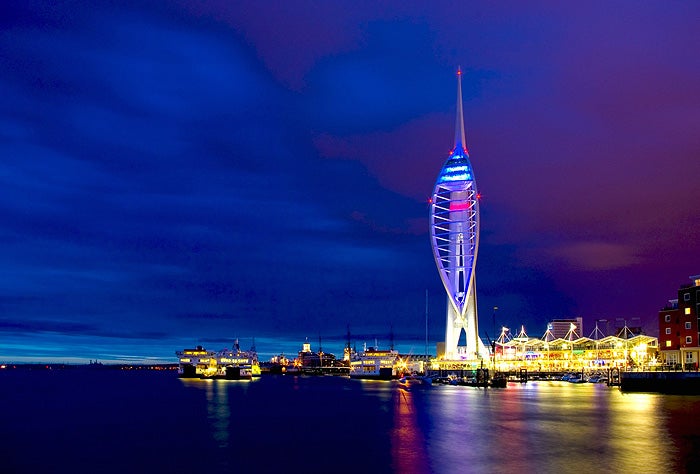Support truly
independent journalism
Our mission is to deliver unbiased, fact-based reporting that holds power to account and exposes the truth.
Whether $5 or $50, every contribution counts.
Support us to deliver journalism without an agenda.

Louise Thomas
Editor
As Portsmouth FC take on Cardiff City in this afternoon's FA Cup final, the players from Pompey (as the team is always known) may find themselves watched over by the spirit of an erstwhile goalkeeper and leading light of Victorian England.
This mystery man was born in Edinburgh and knighted in 1902 for services to the Crown relating to the Boer War. He did a stint as a ship's surgeon on board a whaler in the Arctic before settling in Portsmouth's genteel neighbour Southsea, where he practised as a doctor in the 1880s. Here, he doubled as the David James of his day for the local amateur team, Portsmouth Association Football Club. One more clue? Well, it's elementary...
Step forward Sir Arthur Conan Doyle, creator of Sherlock Holmes. His literary exploits as one of England's first and best crime novelists are revealed in A Study in Sherlock, a permanent exhibition that opened last year at Portsmouth City Museum.
Labelled by Boris Johnson as "one of the most depressed towns in southern England", Portsmouth has nevertheless long boasted of its literary credentials as the birthplace of Charles Dickens. Indeed, Portsmouth can claim ties with many noted figures, from Admiral Lord Nelson to Jane Austen and HG Wells.
Reminders of and shrines to the past are to be found all over the city, including the Royal Garrison Church on Governor's Green as visited by Fanny Price in Mansfield Park, and the imposing masthead of HMS Nelson in dry dock. Yet only relatively recently has the city started to make the most of its part in history as the place that gave birth to Sherlock Holmes, a literary creation who went on to feature in four novels and 56 stories. Now, Sherlock fever is spreading fast.
An impoverished and jobless Conan Doyle first came to Portsmouth on a steamer along the coast from Plymouth. He landed at Clarence Pier, where a seafront arcade now parts people from their loose change. A pink memorial plaque on the side of Bush House on Southsea's Elm Grove marks the spot where the author introduced his violin-playing sleuth to the public in the first two Sherlock Holmes mysteries, A Study in Scarlet and The Sign of Four.
Between 1882 and 1890, Dr Conan Doyle would while away the hours waiting for new patients to minister to by writing short stories and historical novels. Sadly, nothing remains of the doctor's original three-storey brick house, which was bombed during the Second World War.
Not far away, on Victoria Road South, stands the Portsmouth Temple of Spiritualism, to which the writer donated money after the loss of his son Arthur to pneumonia. It's hard to reconcile the famed deductive reasoning of Sherlock Holmes with Conan Doyle's faith in mediums and visitations. One of the most intriguing sections in the City Museum exhibition focuses on this aspect. On the back of a photo of Conan Doyle taken during a seance with a spirit guide by his side, he wrote: "Taken under my own test conditions. Purports to be my son. Not good of him."
The image is one of a 40,000-strong collection of memorabilia left to Portsmouth by Richard Lancelyn Green in 2004 on his death. A Holmes scholar with more than 200 publications to his name, Lancelyn Green possessed everything from a waistcoat worn by Sir Arthur to copies of the Radio Times carrying listings of television adaptations of Conan Doyle's mysteries.
Stephen Fry, the patron of the Arthur Conan Doyle Collection, has deemed the huge consignment of books, production posters, authentic letters and other artefacts to be one of the most extraordinary of its kind; his wryly affectionate tones narrate the exhibition.
As well as interactive readings of selected Conan Doyle works, there are clue trails to encourage younger visitors to hone their powers of detection and a specially written "new" Sherlock Holmes mystery entitled The Case of the Portsmouth Doctor. Will Holmes and Watson succeed in locating the luckless practitioner who's gone missing from his Southsea boarding house?
Arthur Conan Doyle threw himself into local life, becoming active in the football, cricket and bowls teams, as well as joining the Portsmouth Literary and Scientific Society. Even when he upped sticks and left for London in 1890 to specialise as an ophthalmologist, he continued to fund both his football club and the spiritualist church from afar. To discover more about his connections with the city, the museum organises occasional themed guided walks.
A few days after Conan Doyle's death in 1930, a spiritualist meeting was arranged at the Royal Albert Hall for him to make an appearance from beyond the grave. He didn't show up, but there were many among the audience who swore blind that they felt his presence.
When the Portsmouth team step out on to the Wembley pitch this afternoon, if you listen hard enough, above the din of the terraces, you may just hear the ghost of a voice singing "Play up Pompey, Pompey play up!"
Traveller's Guide
Getting there
National Rail enquiries: www.nationalrail.co.uk; 08457 484 950
Staying there
The Clarence, Southsea (023-9287 6348; www.theclarencehotel.co.uk); B&B starts at £99.
The Florence House Hotel, Southsea (023-9275 1666; www.florencehousehotel.co.uk); B&B starts at £75.
Visiting there
Portsmouth City Museum, Museum Road, Portsmouth (023-9282 7261.
More information
www.visitportsmouth.co.uk; 023-9282 6722
Subscribe to Independent Premium to bookmark this article
Want to bookmark your favourite articles and stories to read or reference later? Start your Independent Premium subscription today.

Join our commenting forum
Join thought-provoking conversations, follow other Independent readers and see their replies
Comments